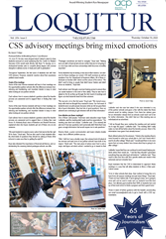Approximately 3,500 indigenous languages around the world have been proclaimed endangered to the point of extinction within the next few decades, a recent study led by nationally recognized linguistics suggests. ?
The report findings were so severe that researchers estimate the death of at least one minority language every two weeks.
The areas most affected by the annihilation of their regions’ native languages include Northern Australia, Central South America, the northern pacific coastal regions of North America, eastern Siberia and some southwestern portions of the United States such as Okalahoma, Texas and New Mexico.
A major factor in language extinction lies in the lack of written text and documentation of many languages’ history and culture.
In some cases there are less than five remaining speakers of a language, and as these last carriers of the dialect die off, so too does the language they have grown up with and used to communicate.
The most severe area of language extinction lies in Australia, where all of the 231 native tongues spoken are considered to be endangered. The Magati Ke, for example, is a language rich in Aborigine culture and tradition in Australia’s Northern Territory. Only three living speakers still carry on the traditions and dialects associated their native language, giving Magati Ke a slim hope for recovery.
South America’s 113 endangered languages, the majority of which are situated in the country’s central regions, are dying off due to the overwhelming growth of Spanish and Portuguese in the area.
Being able to communicate with one another is a crucial need for humans, and when an individual is limited to just a few close relations who share the same native language, they have no choice but to modify their speaking techniques to accommodate the dialect of the rest of the country.
The Northern Costal Regions of North America are fighting a losing battle to sustain the area’s 54 native languages. As in South America, the vast dominance of English, America’s native language, has all but taken over the general culture in these regions, including Washington, Oregon and the Canadian province of British Columbia.
Citizens of these areas are not literally forced to change their dialects, but in reality they have no choice but to greatly alter their language in order to stay up to date with the United States and the rest of the world.
The local languages in places like Russia and Eastern Siberia are required by the country’s communistic government to use only the nationally recognized languages of Russian and Sakha.
This indisposed situation is also present in the Southwestern United States, where the 40 languages frequently spoke by native Indian tribes in the region are basically either forced to change their ways of communicating or relocate to a predetermined reservation with limited resources and an altered quality of life.
While efforts are presently being made to recognize this unethical situation and modify it to accommodate all languages and cultures, the constantly growing world of business and technology makes it nearly impossible to integrate another 3,500 sparsely spoken languages into everyday life.
Over 80 percent of the world is familiar with the approximately 83 “global” languages represented on an international level. With the loss of another minority language every two weeks, the future of a diversified communication forum appears bleak indeed.


